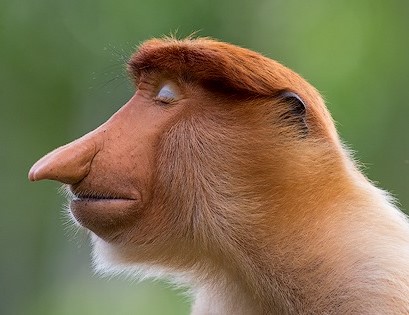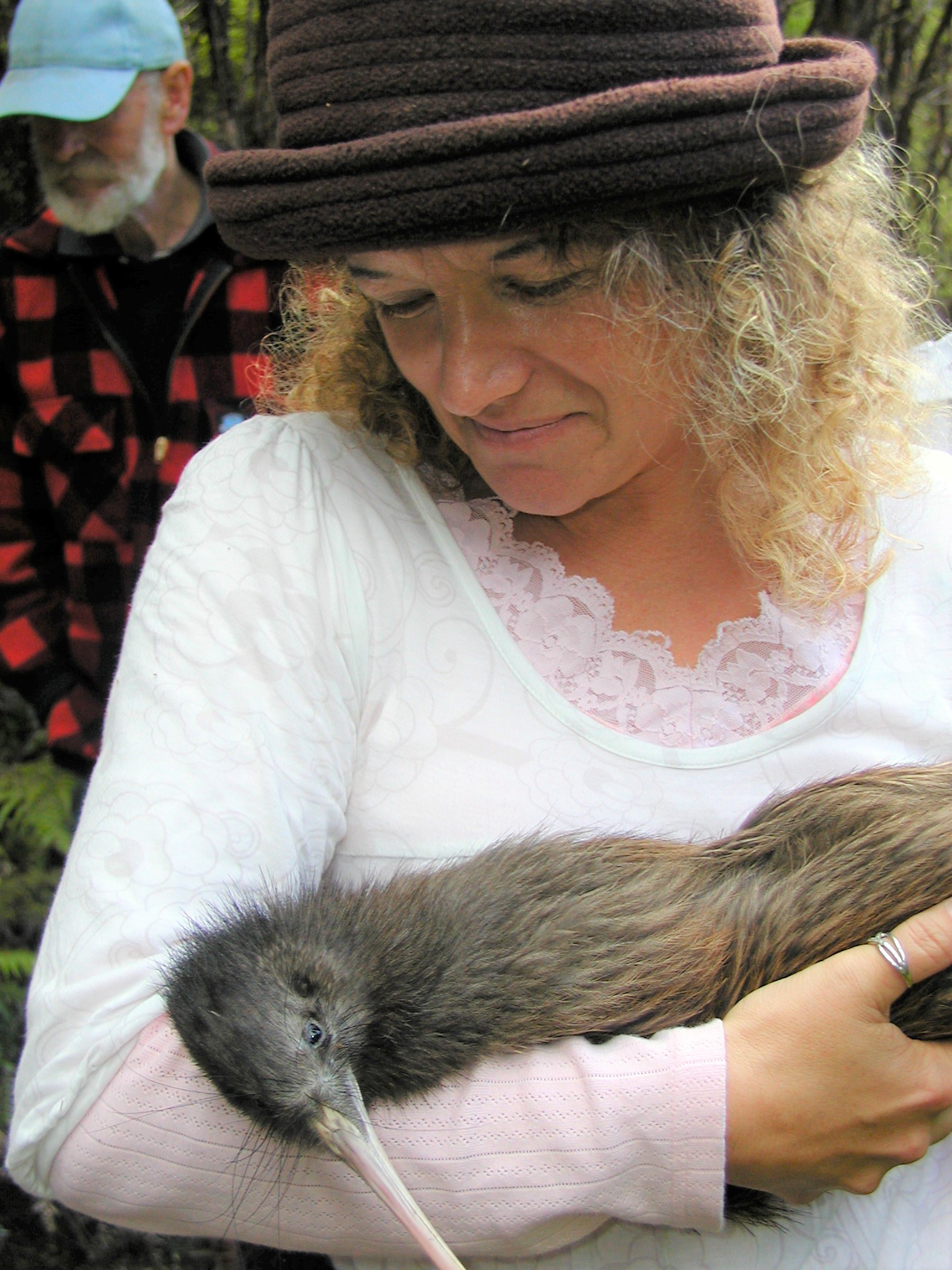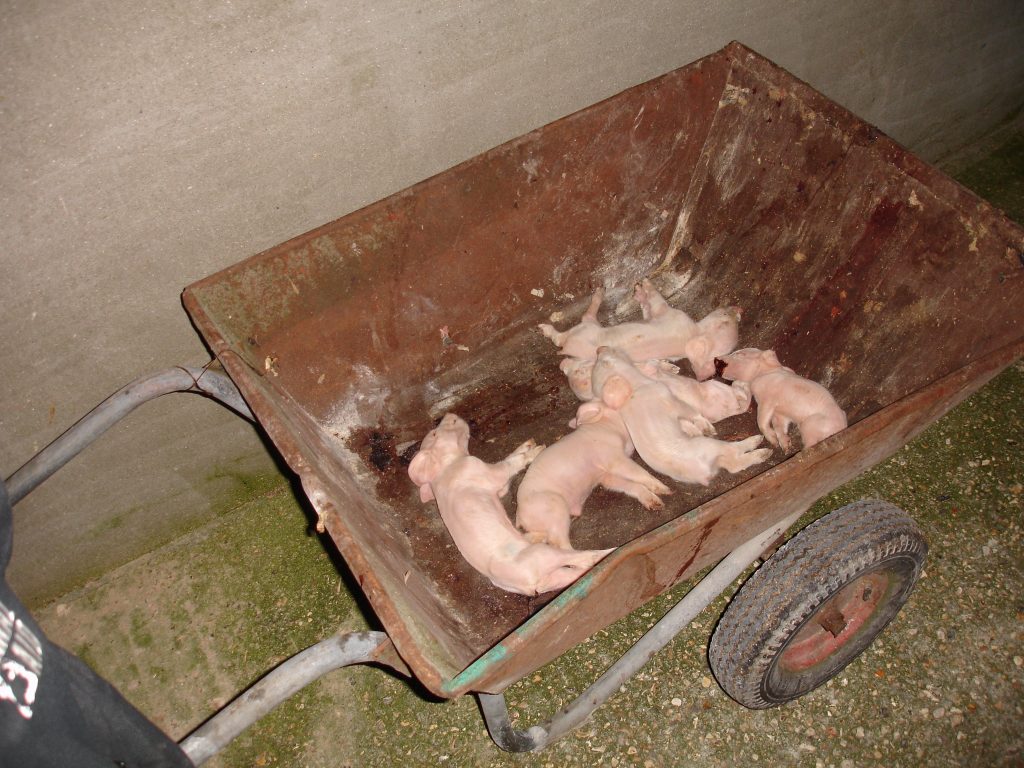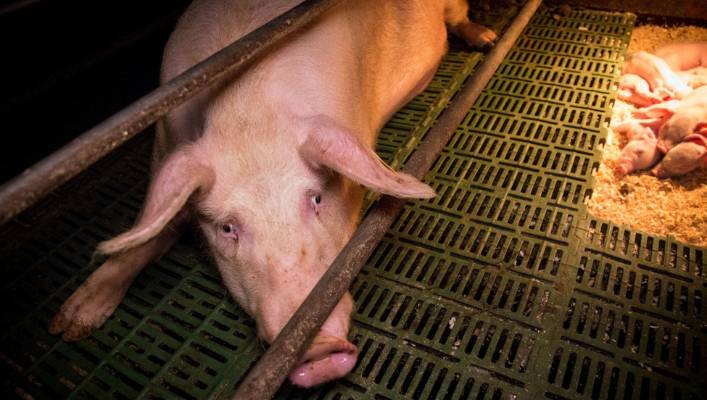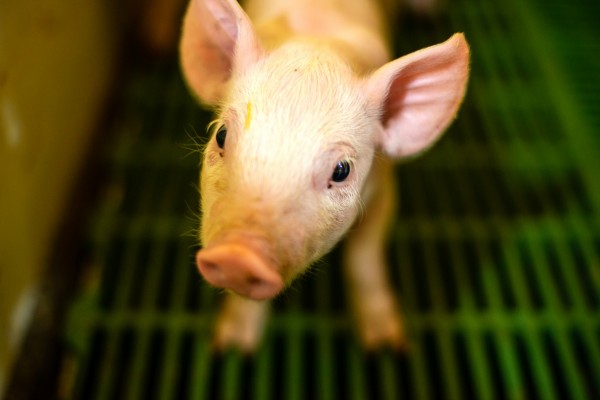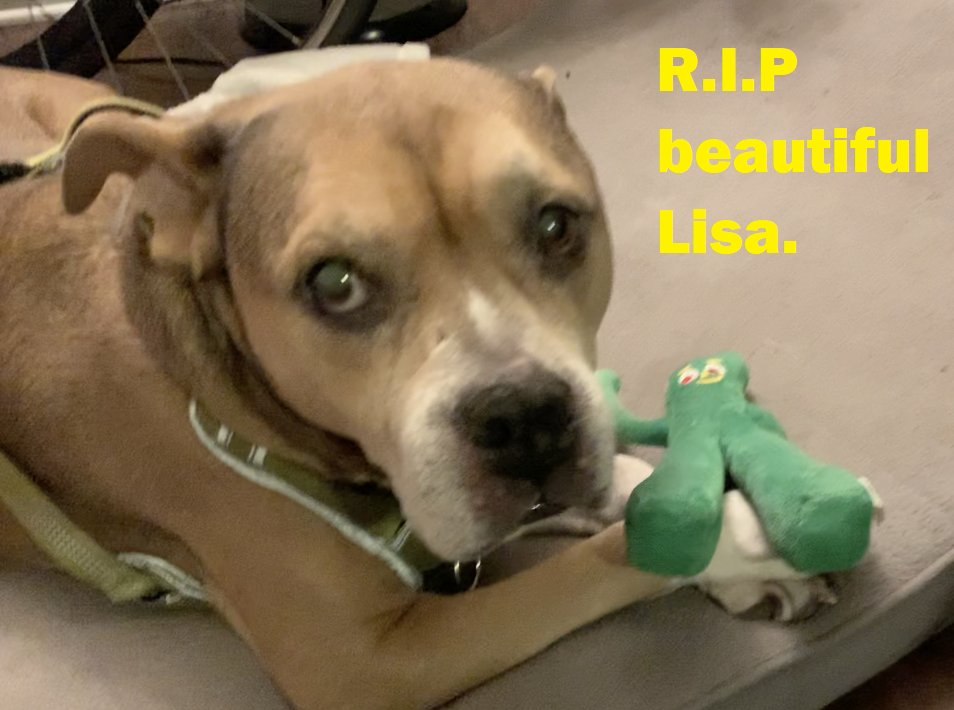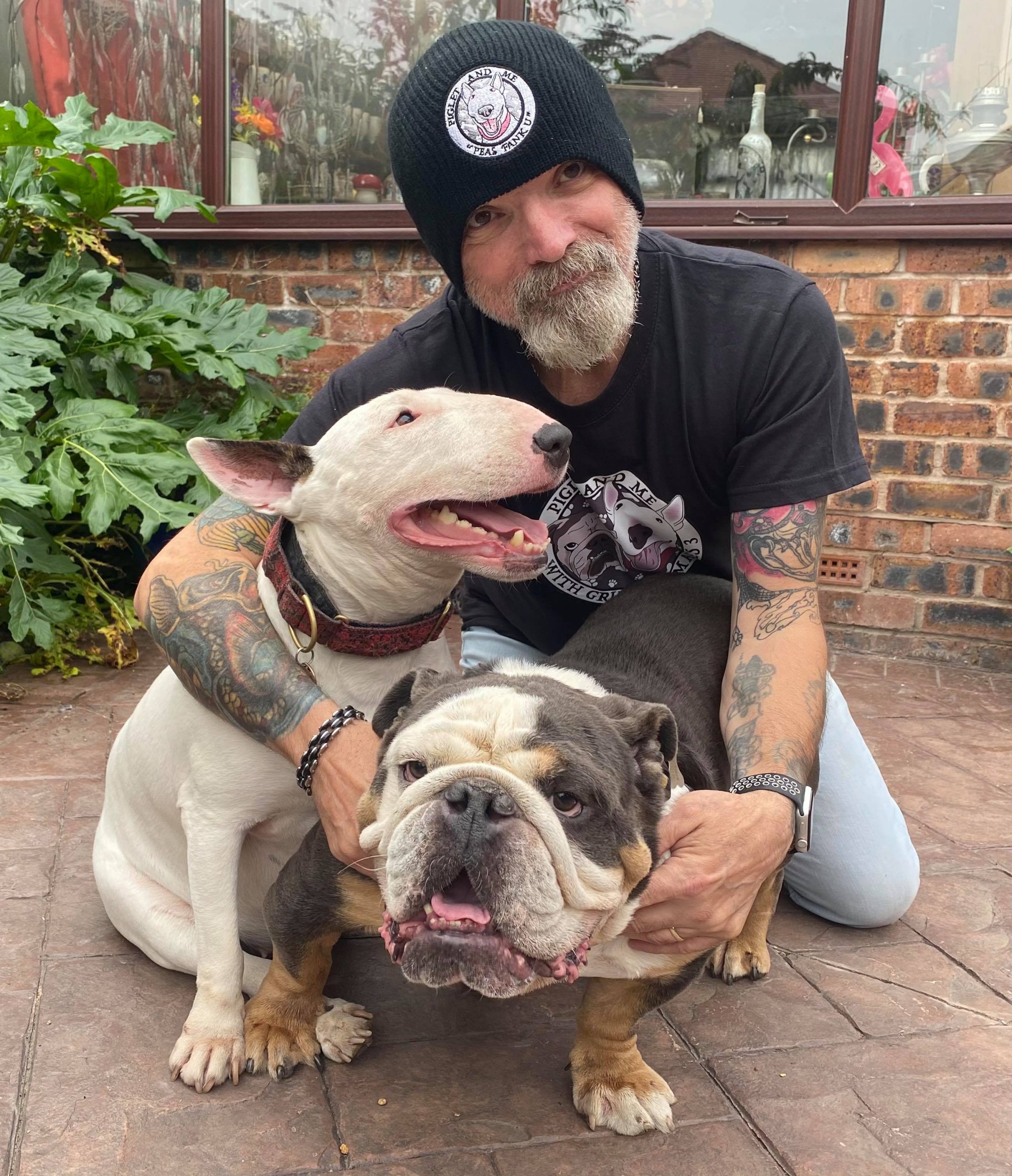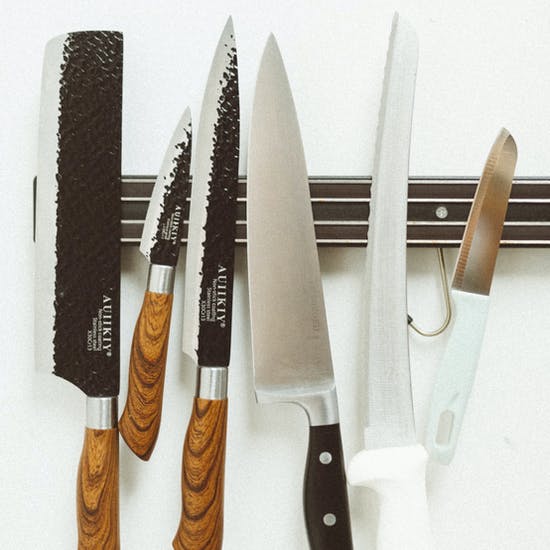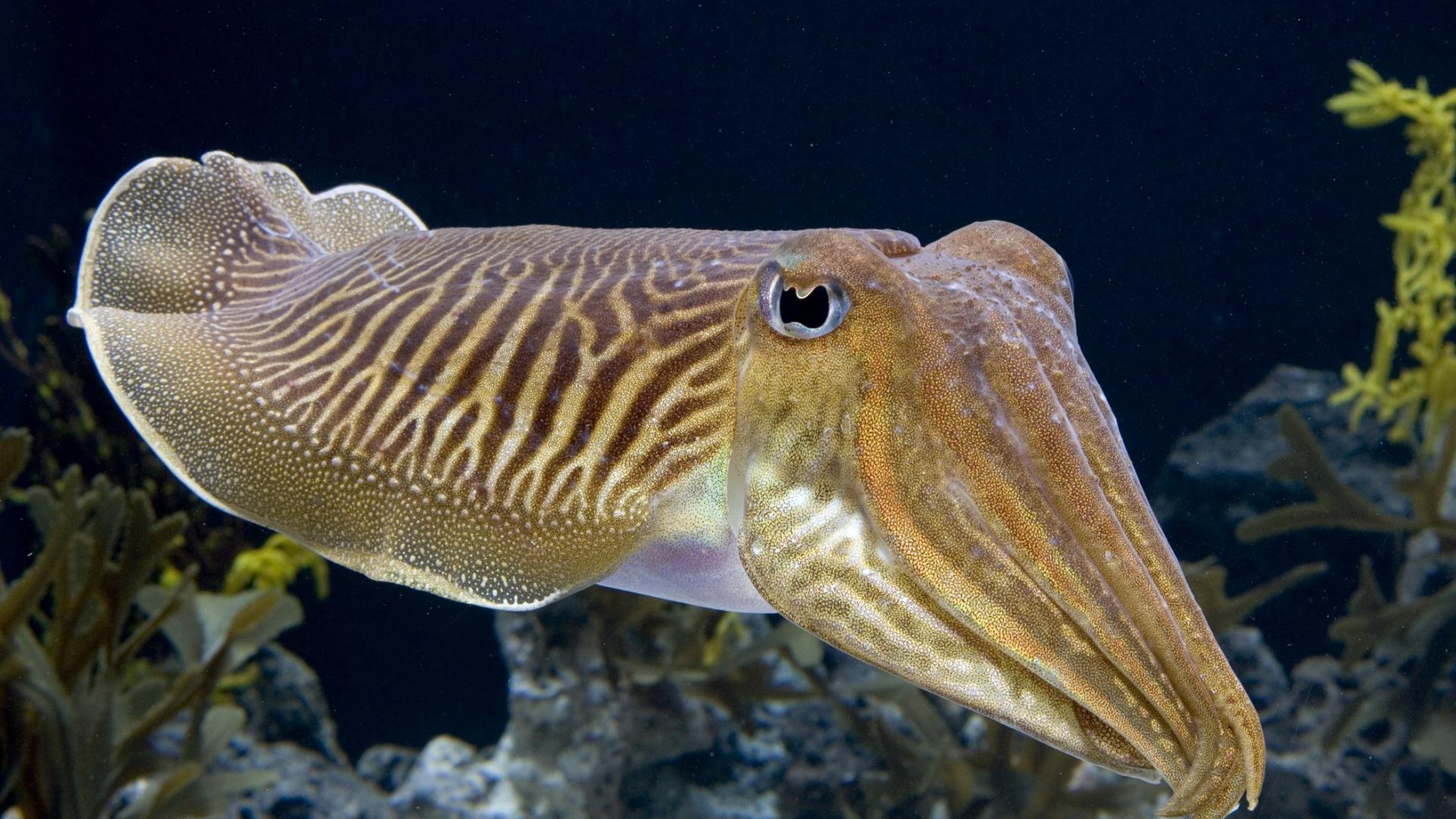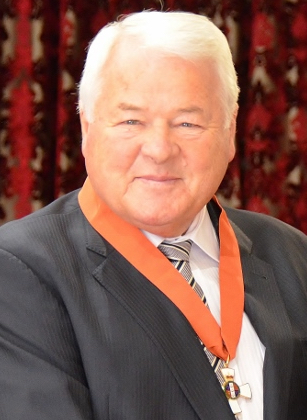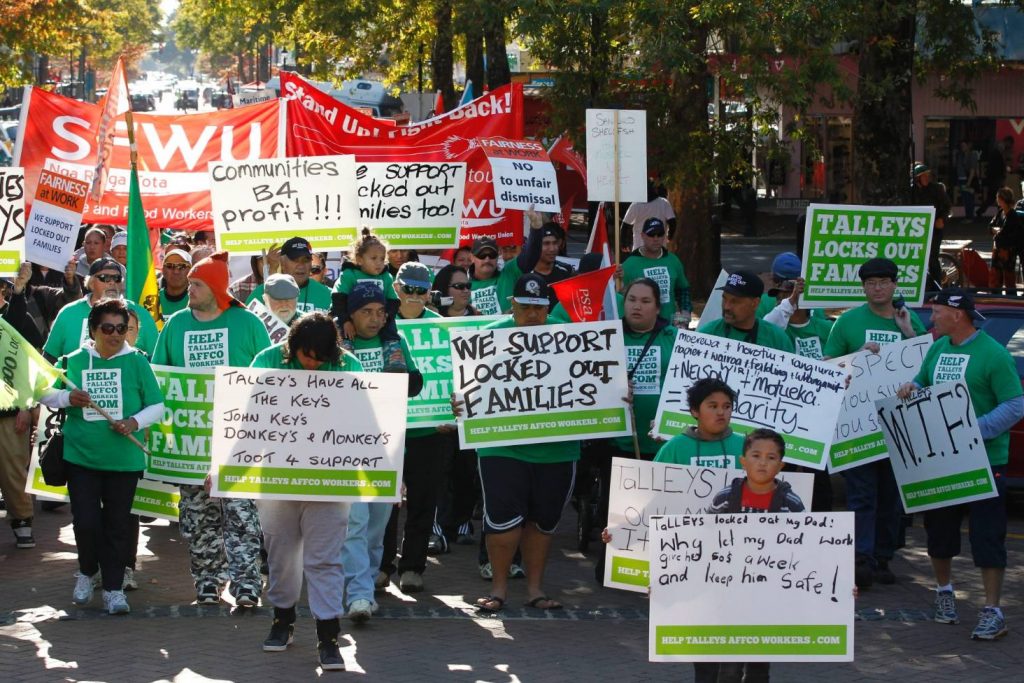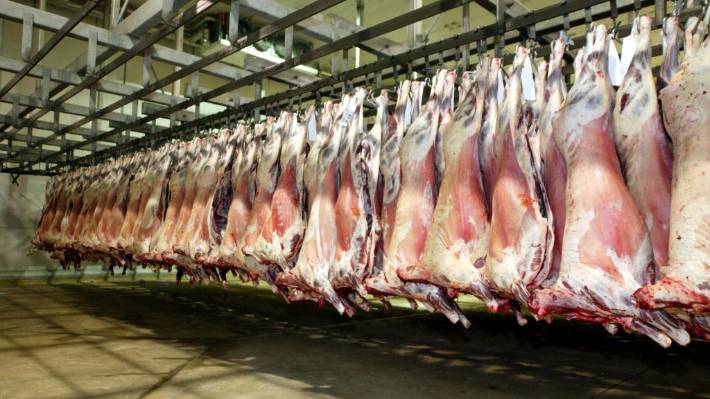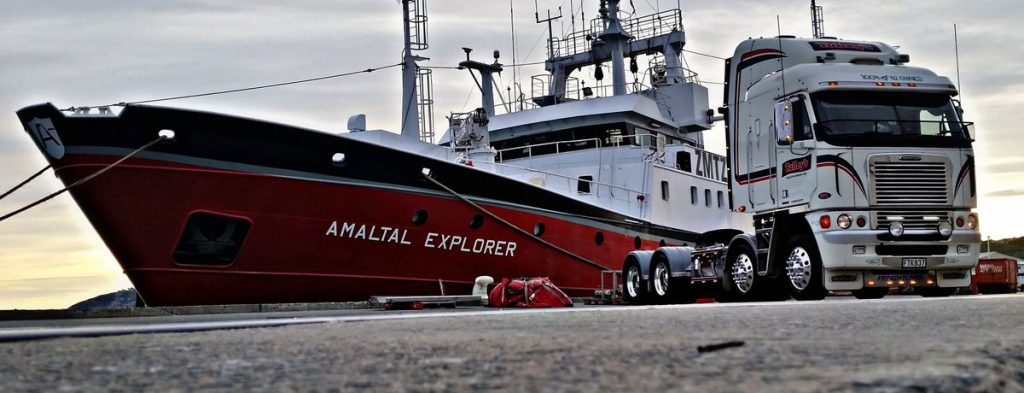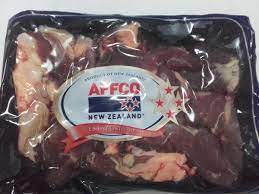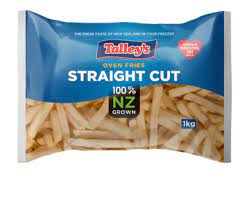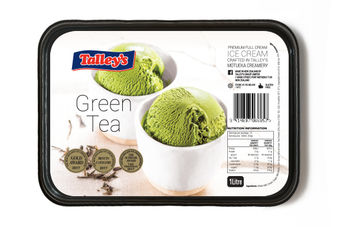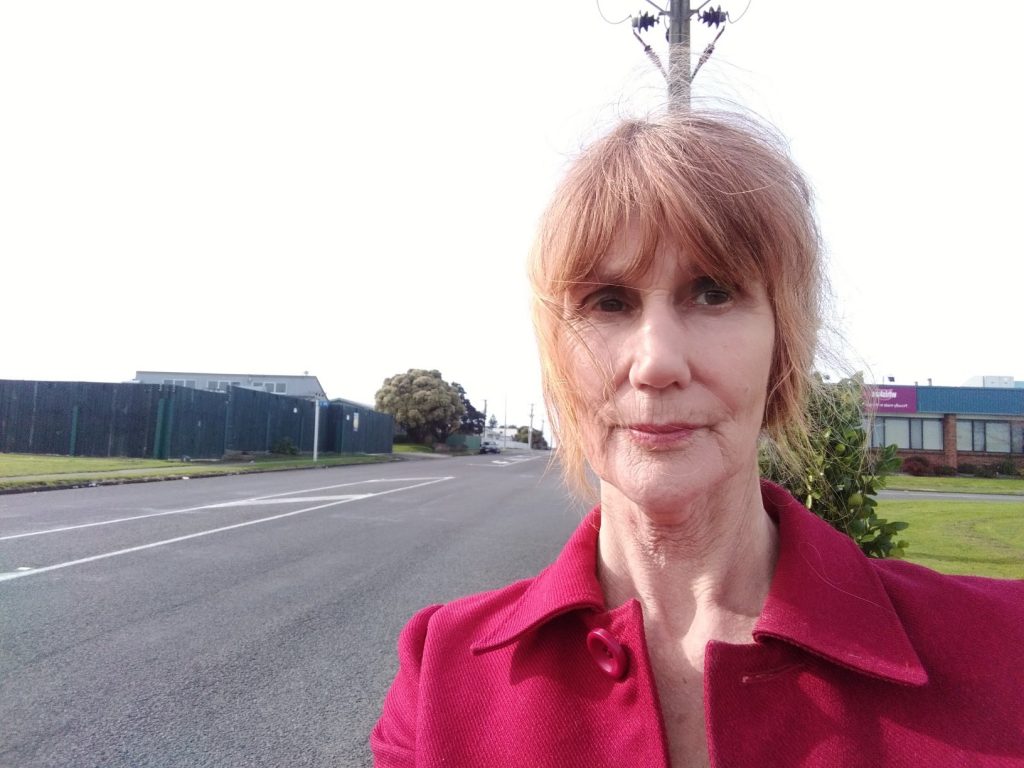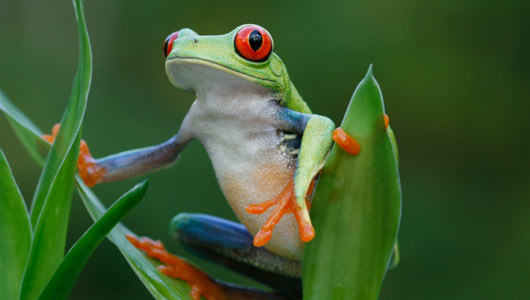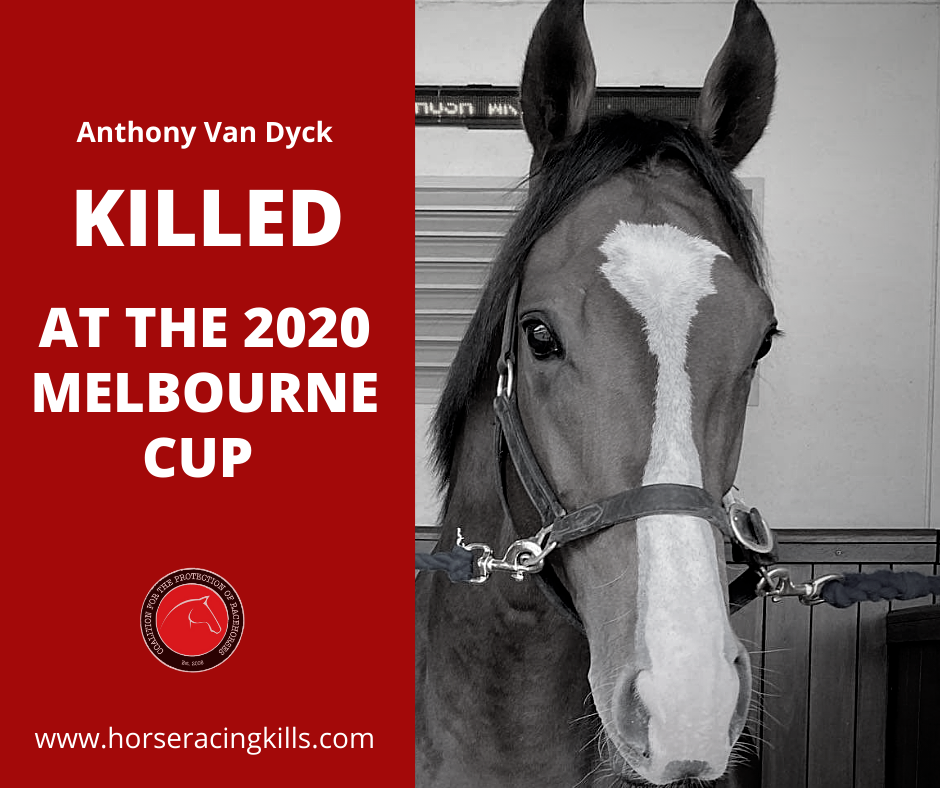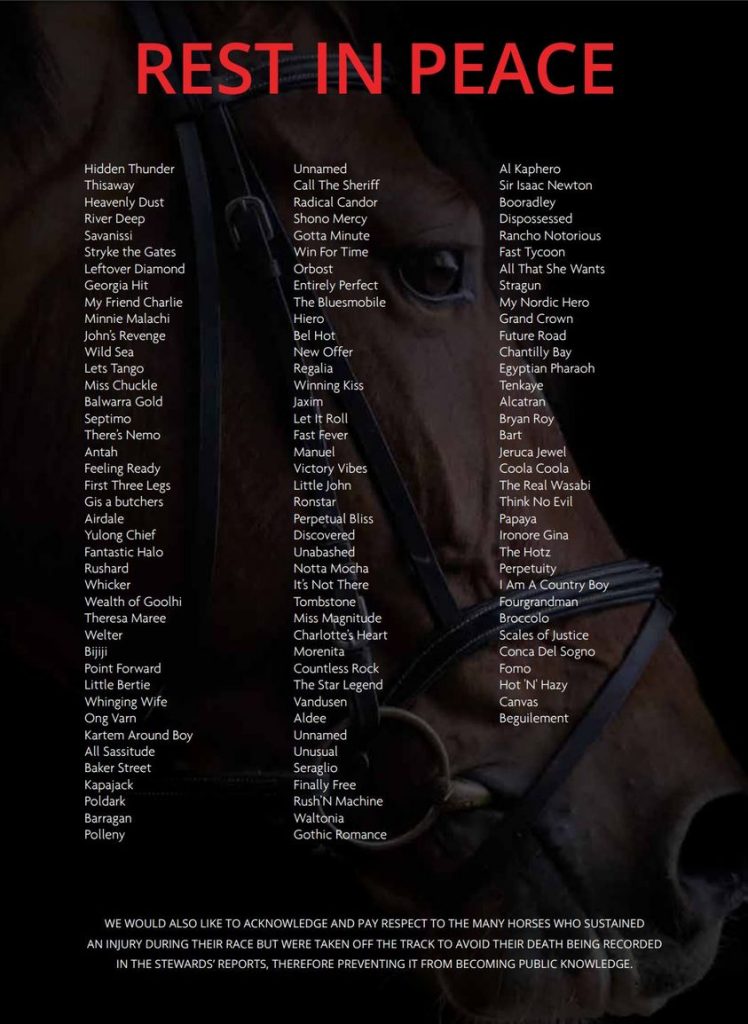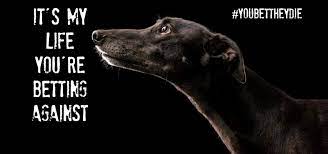In this moving article, End Animal Slaughter contributor Mike Shaw recalls his job as a slaughterhouse worker, his ‘epiphany’ as he was about to kill a young boar, and his view on slaughterhouses now.
I didn’t do well at school, in fact I didn’t do well at childhood. Bullied, and brought up in social services, I didn’t attend school at all for most of my last year. I still managed to pass one O level, albeit in art, but it wasn’t going to feed me. I stumbled into retail work as I stumbled into most things in the those days, and should have been a baker but it wasn’t for me. I did though become a butcher in a local supermarket and after a while I could call myself a ‘time-served butcher’ due to experience, something you don’t hear much of nowadays. I had a knack for it. I could throw a carcass through a bandsaw better and faster than most, and was a dab hand at trusting up a silverside or topside joint. Then I had to move. For a while I was homeless while still managing to keep the job down, but it was becoming harder and harder to do. After a while it proved impossible so I became jobless to go along with my homelessness. I moved a little further up north and managed to get a room with relatives, and they told me about the plant nearby that was looking for workers. I went on the off chance, and met the manager. He took me into his office and we had a chat. He said he was impressed with my credentials, and offered to show me around.
‘There were people in white everywhere you looked, and lumps of bloody flesh covered just about every surface, hung from every available space. The dead animals outweighed the humans by some 20 to 1’.
The place was vast. I was used to a butchery department in a store, and wasn’t prepared for this. The noise is the first thing to hit you followed by the smell, something you will never understand until you have never experienced it. There were people in white everywhere you looked, and lumps of bloody flesh covered just about every surface, hung from every available space. The dead animals outweighed the humans by some 20 to 1. I got the job. I started in the cutting bay next to the slaughter bank. Fresh meat was sent through on hooks to be fashioned into whatever cut of meat was required. I was fast, and before you knew it I was a supervisor. You got used to the noise, machinery, chatter, and sometimes the smell too, but one noise you never got used to was the animals you heard going through the slaughter bank.
But it was just a job.
When they asked me to move through to the slaughter floor, saying they would get me my licence to slaughter, I thought it sounded very James Bond so took the job. Little did I know.
‘First day in the killing bays they give you a lamb, a knife and a set of electrodes, the idea being if you can kill it you can kill anything. It was less than six months old. They leave you to it, no matter how long it takes. It took me three hours, three hours of trying to not look at it, trying to not make eye contact, three hours before I could dispatch it’.
First day in the killing bays they gave you a lamb, a knife and a set of electrodes, the idea being if you can kill it you can kill anything. It was less than six months old. They leave you to it, no matter how long it takes. It took me three hours, three hours of trying to not look at it, trying to not make eye contact, three hours before I could dispatch it.
It had been several years and I had seen most things come through for slaughter; sheep, goats, bulls, horses, but the one thing I hated seeing coming through more than anything was the pigs. They knew, they understood what was going on, they screamed, they fought you tooth and nail to stay out, they screamed and they screamed loud.
‘It had been several years and I had seen most things come through for slaughter; sheep, goats, bulls, horses, but the one thing I hated seeing coming through more than anything was the pigs. They knew, they understood what was going on, they screamed, they fought you tooth and nail to stay out, they screamed and they screamed loud’.
I dreaded the pigs because I knew they knew.
Once an incident occurred that changed everything. I had had a rough weekend, split up with my girlfriend at the time, and got so drunk it should have killed me. It was a Monday morning and I was not in the best state of mind, made worse when I saw the paddocks full of pigs delivered in over the weekend. Not just a couple, but hundreds. It was going to be a busy day – and the pigs knew.
I put my whites on, grabbed my knife roll and went into the bank. Outside the door I could hear them coming, high pitched screams and workers trying to muster them through. They just didn’t want to go, but in they came, covered in old and new scars from journeys and loading and unloading, covered in each other’s shit from not being able to move around in the backs of lorries. Suddenly there he was standing in front of me, a young boar, teeth clipped so as to not damage the other ‘goods’, castrated, and screaming at me.
I didn’t realise how long I just stood there, I didn’t realise I had been crying for so long, I didn’t realise they were calling my name.
I just stood there looking at him and he sat looking back at me, no longer screaming. In my mind the same mantra was repeating again and again, “What the fuck are you doing?”
‘Standing knife in one hand electrodes in the other I cried, crying for what I had become, crying for what I was doing, crying for the man now buried deep inside the monster wielding a knife in front of its victim’.
Standing knife in one hand electrodes in the other I cried, crying for what I had become, crying for what I was doing, crying for the man now buried deep inside the monster wielding a knife in front of its victim.
I heard them shout my name. I turned and who knows how I must have looked, tears on my cheeks and the same look on my face as the pigs, as they try not to go through the doors. They looked at me wondering what was going on, and I didn’t know either. Was I having a breakdown?
No, it wasn’t a breakdown. It was an epiphany.
I looked back at the young boar, told him I was sorry, sorry for all I had done. I dropped the knife and electrodes, took off my whites and dropped them to the floor. I turned and walked out, never to return.
It was just a job, but it wasn’t my job any more.
I moved away from the meat industry, lived my life as normal as others. I learnt to disassociate the same way as the rest of society does. I even carried on eating meat because it comes in styrofoam trays wrapped in clingfilm.
It’s now many years later and I’m now a vegan, an ethical vegan. I’m here to tell you there is nothing humane within the walls of a slaughterhouse, it’s a place were all humanity is lost. The existence of slaughterhouses is a terrible blight on our societies, and they need to be closed down forever.
Photo of Mike with his companions Piglet the English Bull Terrier, and Grumble the British Bulldog
